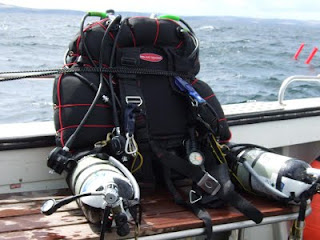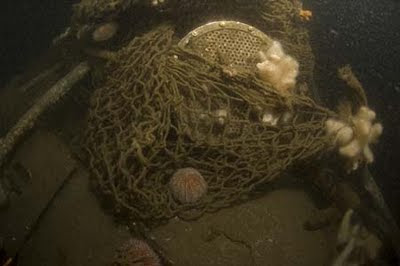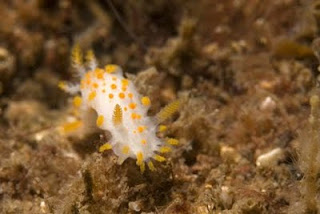
First published in Dive Magazine Jan. 2005
Get charter - Farne Diver
By Mike Clark
The Farnes have become a firm favourite with generations of divers. Mike Clark boards a boat with a skipper from the new wave…
The Farnes have become a firm favourite with generations of divers. Scott MacDonald boards a boat with a skipper from the new wave
I first dived the Farne Islands off Northumbria 18 years ago, with skipper Stan Hall. Stan's eldest son, Lee, now continues his long-standing family business, offering diving charters on the Seahouses-based Farne Diver. Lee Hall, 29, is a fantastic skipper and incredibly laid-back. The man commands respect though, as he demonstrates his outstanding knowledge of the area in a characteristically low-key manner. For instance, when he told me that he would drop me exactly on the prop of the wreck of the Abyssinia in 5m of water, I was impressed. However, dropping me 2m south of the bow of the Britannia at a depth of more than 30m was quite outstanding. Lee is also a useful source of information on the resident grey seal population and knows all the best sites for providing divers with good encounters with them. The Farnes are well known for their confused seas and the tidal rips. You need a skipper who will find the optimum site for protection from the tides at any given time. Much of Lee's experience comes from his father, who has taken divers out of Seahouses for 30 years. Lee started going out on the boat with his dad when he was just five years old and has absorbed a wealth of knowledge about the area. He also worked on trawlers for seven years before taking divers out full time. He's been working with divers for seven years now.Farne Diver is a no-frills working boat. She is comfortable for ten and the wheelhouse can cram in most of this number, but apart from that there's no other shelter. There is a large shelf at the stern of the boat which is ideal for stowing cylinders on the way out to dives, and the sizeable engine hatch makes a handy seat for kitting up. The downside is that you find yourself squeezing past divers every time you walk up and down the boat. The only other seating available is inside the wheelhouse or on the gunwale, which is quite shallow, only coming up to a diver's knees. The galley is typically basic, with just a couple of gas rings for heating up those welcome cups of tea and coffee. The head is also found down here and is big enough for a drysuit-clad diver to disrobe in privacy. Otherwise, the forward section of the boat is mostly used for stowage purposes.The Farne Diver isn't fast but her average cruising speed of 8 knots is more than adequate for Farne diving, and even for the longer cruises to wrecks such as the fantastic Somali. The standard dive boat ladder makes entering the boat relatively stress-free, even with a heavy twin-set.The wheelhouse does have some electronics onboard, including GPS, a sounder and radar, although I don't think Lee needs to use them unless one of the area's harrs (thick sea fogs) comes in.I've always enjoyed diving from the Farne Diver, and much of my pleasure has obviously derived from the coastal scenery. That said, a lot of my good times here have been thanks to Lee's abilities as a skipper. He has an uncanny knack of predicting what you will encounter on the sea floor, even though he is a non-diver himself.
What we liked The skipper's laidback style and undoubted ability.What we didn't like It can be a bit of a squeeze when divers are kitting up.Boat: 12m-long Cheverton general work boat Moored: Seahouses Harbour Engines: 120hp twin Perkins Date of manufacture: 1996 Cruising speed: 8 knots Head: one standard marine head Maximum passengers: 12 Optimum


















































